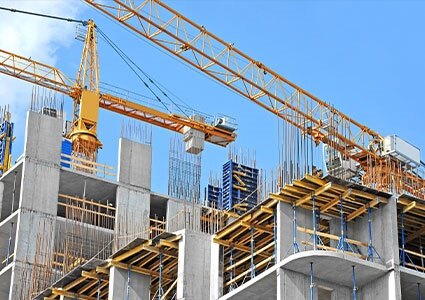Modern construction projects face greater headwinds to success
Construction and development projects have always been inherently dangerous places. The movement of massive amounts of material and equipment by a large group of contractors in a confined space requires careful choreography by very experienced individuals with a great deal of oversight and supervision. To do that while also attempting to mitigate or eliminate risk to both lives and property makes the task that much harder. The modern construction project faces greater headwinds to success and profitability than have ever been seen.

The success of a project is heavily influenced by various factors: project complexity, quality control demands, contractual and legal obligations, supply chain disruptions, skilled labor shortages, and evolving environmental and regulatory compliance conditions. Adding to this challenge are construction loan interest rates that have surged, leaving owners and contractors tasked with managing complex projects with considerably tighter margins than in recent years.
The natural response is to take immediate action to reduce pressure on margins – they rely on these for the profits that keep their business running and staff employed. Quite often these actions include attempts to shorten a project’s timeline to reduce time element expenses and/or reach a point where a project can begin generating revenue sooner. We also see contractors utilizing smaller teams comprised of less experienced professionals, and therefore lower paid, to reduce overhead. Lastly, it is common at both the ownership and contractor level to reduce the number of safety and supervisory roles assigned to the project. What often remains is a smaller work force, with less experience, working on a tighter timeline with reduced procedural and safety supervision and the potential breakdown of careful choreography – all alongside an increase in risk.
So, what can the industry do to overcome these challenges? How do we mitigate risk to projects and their employees while allowing owners and contractors to maintain the healthy bottom lines they need to complete these projects? There are three potential solutions making an impact:
1. Jobsite Technology:
Over the last ten years, technology has become a valuable tool across all areas of construction job sites. This tech includes:
- Site safety applications that can be downloaded onto phones and tablets carried by everyone on the site. These apps allow for the reporting of conditions that could lead to injury or damage, report an injury or accident that does occur and collect valuable real time data that can be analyzed to help prevent accidents in the future.
- The use of augmented or virtual reality tech that can simulate unsafe conditions or accident scenarios and aid in site safety training.
- The use of wearable tech that can track the location and vitals of laborers on the site, notify site supervisors of an emergency condition and help in locating the affected individual on the jobsite.
- AI assisted site surveillance that can detect unsafe conditions like fires, settling, and collapse, as well as then notify the appropriate individuals.
- Weather parametrics that can help predict the occurrence of severe weather that can impact the smooth operation of the project.
The pervasive use of this tech allows ownership and site management to ensure the safety of their workers and avoid costly damage to their projects. In turn, salaries can be diverted to the hiring of the additional skilled labor needed to safely meet the condensed project timelines.
2. Outsourced Training and Supervision Resources: 
Technology is an amazing resource when properly employed, but there is no greater method for avoiding risk in construction than the proper training and supervision of those doing the work. Nothing can replace the human element and the experience they bring to the process. Unfortunately, not every contractor has the resources necessary to hire staff that are solely dedicated to supervision and training duties. Very often we see those responsibilities added to the workload of crew supervisors who already have significant responsibilities. However, there are firms dedicated to aiding in this area. They can be utilized by ownership to augment site wide training and supervision with individuals dedicated to a project or by individual contractors in the form of ready to use safety training and educational materials. The result is a cost-effective solution that meets the training and supervision needs of everyone involved.
3. Leveraging Insurance Provider Relationships:
It is important to rely on all insurance partnerships to ensure the project is running smoothly and safely. Together, they have arsenals of resources that they make available to their insureds. These resources include:
- Construction engineers, many of whom had previous careers in the construction industry, are superb resources in coordinating resources and providing guidance to put together a safe and well-run project.
- Jobsite training materials tailored to specific types of projects and considering the types of accidents / injuries / circumstances that they have seen occur from real life claims scenarios.
- Access to experienced claims personnel whose goal is to make sure injured parties receive the best treatment in a timely manner and assist in timely remediation to any damage to a project and avoid further delays and associated costs.
The construction space is a dynamic, fast paced, and constantly changing industry. It is facing significant challenges – many of which have not been tackled before. It is an industry
that will continue to evolve to and take on any new and complex infrastructure, renewable resources, biotech, residential and commercial projects we need and do so safely and efficiently.
By Sean Pender
Sean Pender joined CAC Specialty in May of 2022 as Senior Vice President for the Construction and Development practice group. CAC Specialty is a leading specialty insurance broker and advisor that provides expertise and placement capabilities across the spectrum of insurance and capital markets. CAC delivers customized solutions for a wide range of risks, serving both large corporations and small-to-medium enterprises. As an employee-controlled company, it houses top industry talent dedicated to meeting its clients’ comprehensive risk management needs.
